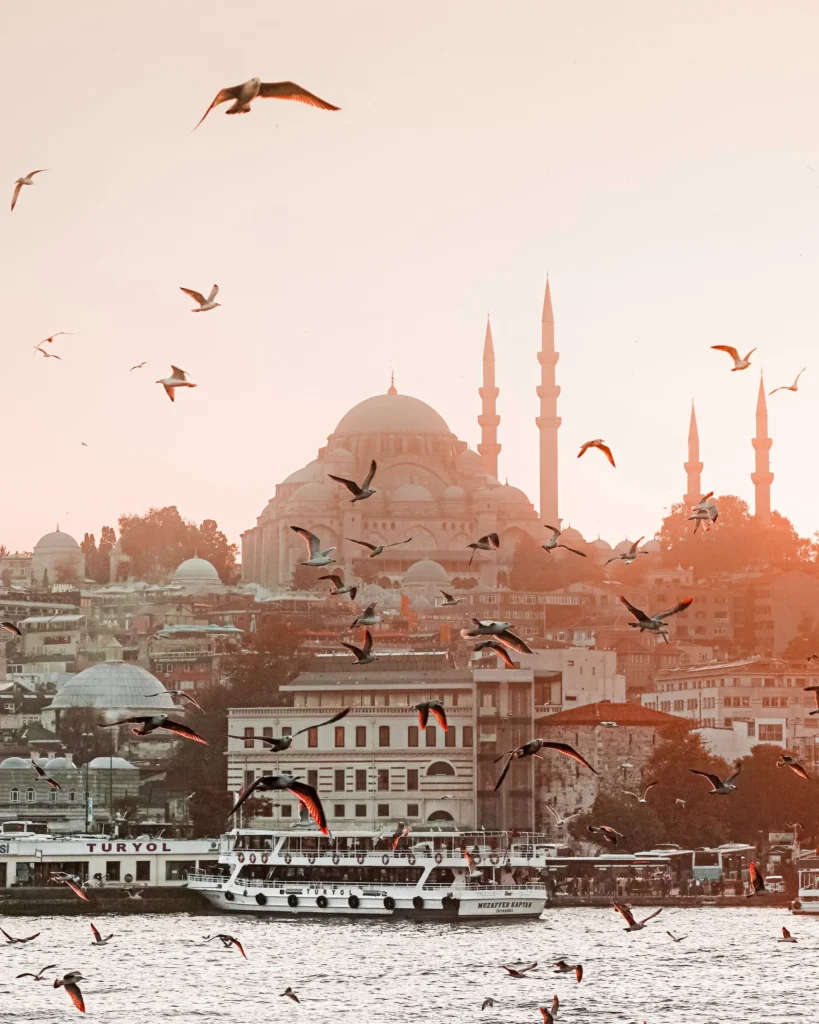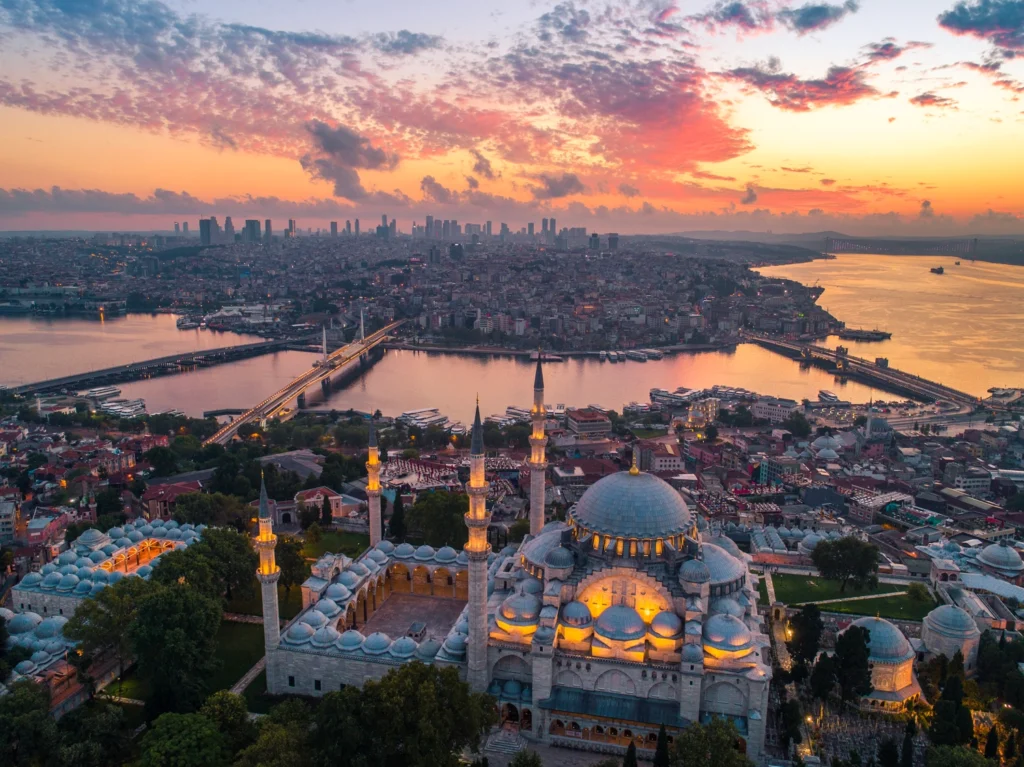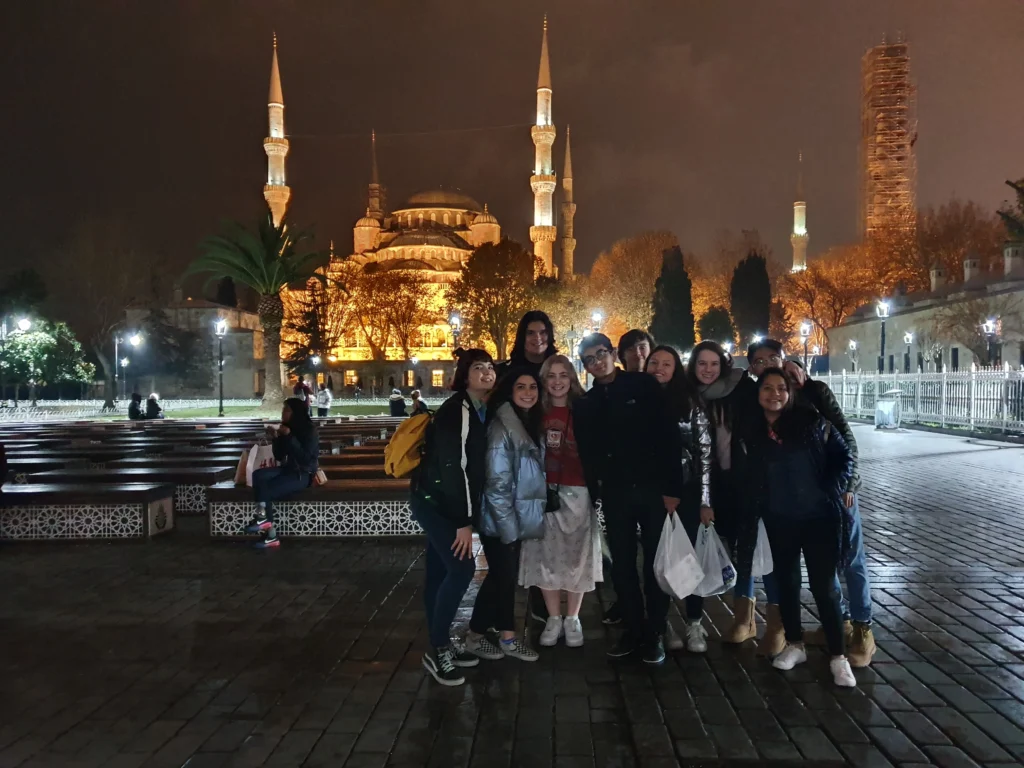Istanbul is one of the top tourist destinations in the world, attracting over 13 million international visitors in 2021 alone. As the largest city in Turkey, Istanbul offers a wide array of historic and cultural attractions for visitors.
The city was historically known as Constantinople and served as the capital of the Roman, Byzantine, and Ottoman empires. This long and storied history has left Istanbul with stunning historic sites like the Hagia Sophia, Blue Mosque, and Topkapi Palace. In addition to historic sites, Istanbul also boasts colorful bazaars, vibrant neighborhoods, scenic waterways, and a cosmopolitan atmosphere.
Some of the top things to do in Istanbul include exploring architectural wonders like the Hagia Sophia, taking in panoramic views from Galata Tower, getting lost amid the stalls of the atmospheric Grand Bazaar, and discovering the city’s rich history at Topkapi Palace. With its mix of European and Asian influences, Istanbul has food, culture, and activities to appeal to all tastes. This overview highlights the very best attractions and experiences to enjoy in this captivating city.
1. Hagia Sophia
Built in 537 AD, the Hagia Sophia is considered one of the greatest and most beautiful buildings in the world. Originally constructed as a Greek Orthodox Christian cathedral, it later became an imperial mosque under the Ottoman Empire and is now a museum in Istanbul, Turkey.

History: The Hagia Sophia has a long and rich history. It was built during the reign of Byzantine emperor Justinian I as the cathedral of Constantinople. The architects were Isidore of Miletus and Anthemius of Tralles, who pioneered a new architectural style that combined the traditional basilica with central dome architecture. After the Ottoman conquest of Constantinople in 1453, the basilica was converted into a mosque. Beautiful mosaics and frescoes were covered up or destroyed. In 1934, Hagia Sophia was secularized and turned into a museum by the Republic of Turkey. It opened its doors to visitors of all faiths and backgrounds.
Architecture: The soaring dome of the Hagia Sophia is its most distinctive feature. At 102 feet in diameter, the massive dome seems to float effortlessly above the basilica. Buttresses, semi-domes, vaults and columns support the immense weight. The dome sits on pendentives – triangular sections of vaulting that form a transition from the circular base of the dome to the rectangular base below. The nave is covered by a central dome which is surrounded by two half domes. Outside, the facade is simple with the four minarets that were added during the Ottoman period.
Interior: The interior is decorated with stone, marble and colored glass. Mosaics depicting Christian imagery and symbols once adorned the walls but were plastered over during Ottoman rule due to Islamic restrictions on religious imagery. Some mosaics have been uncovered and restored since Hagia Sophia’s conversion into a museum. The huge calligraphic roundels bearing the names of Allah, Muhammad and the first four caliphs dominate the upper walls.
Visiting Hagia Sophia: Hagia Sophia is one of Istanbul’s most popular attractions. It’s open Tuesday – Sunday between 9am – 7pm in summer and 9am – 5pm in winter. Admission is €25 but additional charges apply for guided tours. Due to its immense popularity, long queues are common so it’s advisable to book tickets online in advance. Photography is allowed but not the use of flash or tripods. Headscarves are provided at the entrance for female visitors.
2. Blue Mosque
The Blue Mosque, also known as the Sultan Ahmed Mosque, is considered one of the most beautiful mosques in the world and a must-see highlight for visitors to Istanbul. Built between 1609 and 1616 during the rule of Ahmed I, the Blue Mosque gets its name from the 20,000+ exquisite blue Iznik tiles lining its interior walls.
The mosque was built to reaffirm Ottoman power after the previous sultan’s failure in the Ottoman–Safavid War (1603–1618). Its grand scale and architecture, with six minarets instead of the customary four, was meant to compete with the nearby Byzantine cathedral Hagia Sophia.
The mosque’s structure is characterized by cascading domes and semi-domes, a single large central dome, slender minarets, and extensive use of Iznik tiles. Inside, the high ceiling is lined with over 200 stained glass windows, allowing natural light to illuminate the room and accentuate the bold blue colors. The interior also features fine examples of Islamic calligraphy, while the exterior entrance has beautiful cascading inner and outer arches.

Visitors should dress conservatively and avoid visiting during prayer times, five times daily. There are separate entrances for worshipers and tourists, who can enter free of charge. The mosque complex also includes a madrasa (Islamic school), hospice, bathhouse, and the tomb of Sultan Ahmed I.
3. Topkapı Palace
Topkapı Palace is one of Istanbul’s most iconic landmarks. As the primary residence of Ottoman sultans for over 400 years, it offers a fascinating glimpse into the opulent lives of Ottoman royalty.
History: Construction of Topkapı Palace began in 1459 under the reign of Mehmed II. Over the next several centuries, each new sultan added his own touches and expansions to the palace. By the mid-19th century, Topkapı Palace contained over 300 rooms and served as the administrative, educational, and artistic center of the Ottoman Empire. After the Empire fell in the early 20th century, the palace was transformed into a museum.

Architecture: Built on the ruins of Byzantium, Topkapı Palace incorporates a blend of Islamic and Byzantine architectural styles. Notable features include the Imperial Gate, an elaborate entryway decorated with Islamic motifs, and four courtyards, each more exclusive than the last. The second courtyard held amenities like the imperial kitchens and mint, while the third was reserved for the sultan and his harem. Luxurious pavilions dot the fourth courtyard.
Main Features: Topkapı Palace contains a dizzying array of treasures accumulated over centuries by the Ottoman sultans. The Imperial Treasury houses jewels and golden thrones encrusted with emeralds and diamonds. Relics like swords, robes, and turbans offer insight into the lives of the sultans. The expansive harem contains over 400 rooms that once housed several hundred women and eunuchs. Mosaics and tiles throughout the palace are fine examples of Ottoman artistry.
Visitor Information: Topkapı Palace is open every day except Tuesdays. Tickets cost 1500 TL (Aprox. €50). Allow 2-3 hours minimum to explore the palace’s many rooms and exhibits. Guided tours are available for an additional charge. There are two cafes on site for refreshments. Modest attire covering knees and shoulders is required. Topkapı Palace offers a look into the lavish lifestyle of the Ottoman Empire at its peak and is a must-see for any visit to Istanbul.




